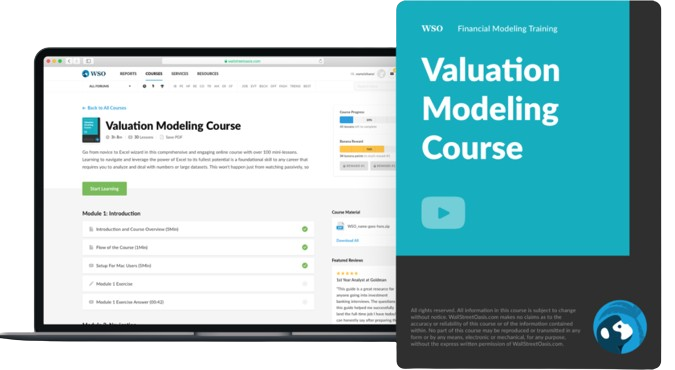Debt Free Cash Free Valuation
A valuation method that assesses a company's value, excluding debts and cash reserves, focusing on its operational assets and liabilities
What is the Debt Free Cash Free Valuation Method?
The Debt Free Cash Free (DFCF) valuation method assesses a company's value, excluding debts and cash reserves, focusing on its operational assets and liabilities.
It clearly shows the company's core value, enabling more accurate assessments during mergers, acquisitions, or business transactions. Enterprise Value measures a company's total value, commonly used in business transactions, considering debt and cash.
The seller gets to keep all the cash and debt of the business entity but gets a sale offer for business operations. This kind of valuation in an offer is called Debt Free Cash Free Valuation.
In layman's terms, if you buy a fully furnished apartment but the condition arises that the seller of the house will take back all the furnishings and the seller will also pay the housing loan on the apartment, you will pay a value equal to the property and house.
In finance, debt-free and cash-free are used interchangeably for enterprise value. It represents the value of the business after the net debt is removed and is used to make buy offers in letters.
Private equity or big firms generally acquire private companies debt-free and cash-free. However, certain assumptions are made about what will be considered cash and what will be considered debt.
Key Takeaways
- The Debt Free Cash Free (DFCF) method evaluates a company's core value by excluding debts and cash reserves, focusing solely on operational assets and liabilities.
- Unlike Enterprise Value, DFCF provides clarity during mergers and acquisitions by offering a clear view of a company's value without considering its debts and cash reserves.
- Analysts use various valuation models, such as market value-based, asset approach, and cash flow method, to determine a company's intrinsic or relative value, which forms the basis of DFCF valuation.
- DFCF value is typically determined by multiplying a company's EBITDA (Earnings Before Interest, Taxes, Depreciation, and Amortization) by a predetermined multiple derived from comparable transactions. This calculation excludes both debt and cash from consideration.
- In DFCF transactions, debts may include leasing obligations, tax liabilities, deferred revenue, and off-balance sheet liabilities, while cash comprises bank balances, cash in hand, petty cash, and rental deposits.
Valuation Models and Determining DFCF Value
Legendary investor Warren Buffet said, "Managers and Investors alike must understand that accounting numbers are the beginning, not the end, of the business valuation."
The Debt Free Cash Free Method values businesses based on their operational assets and liabilities, excluding debts and cash reserves, rather than what has been put into them or what can be removed.
Considering several factors, analysts use various models to find the actual value of the business in question. Valuation models are generally based on intrinsic or relative value, and there are different methods under the same, like:
- Market Value-based model: A valuation method in which values of enterprise assets, tangible or intangible, are ascertained by relating them to the sale value or market prices of comparable businesses sold. For example, X Ltd's goodwill value is ascertained by comparing it with Y Ltd's goodwill, a firm trading in the same products and under the same industry
- Asset approach: The valuation approach based on determining the business's net asset value is known as the asset approach. It is calculated by subtracting net liabilities from the firm's total assets
- Cash flow method: By forecasting the company's future cash flows, the cash flow method determines the present value of the business by projecting future cash flows
Note
Valuation models can be based on various approaches, including intrinsic, relative, and asset-based methods. Each employs different techniques to determine a business's value.
Determining Debt-free Cash-free value
As extracted from the above words, the seller gets to keep the cash and pays the debt. A buyer can find DFCF value by multiplying business earnings with a multiple to use in the offer letter.
DFCF = EBITDA * Multiple
The value generally signifies that both debt and cash of the business were removed from consideration. We consider business value before considering the net liabilities owed to the banks.
The multiple used in the DFCF valuation method is typically derived from comparable transactions or companies rather than solely considering consistent business values.
The varied essentials for calculating DFCF are given above, with the formula being the most important. Buyers could research how other businesses of the same line were solved or their trading value. This helps them determine the correct multiple to estimate enterprise value.
Constituents of Debt
While valuing businesses for debt-free cash-free transactions, the following may be considered debts:
- Leasing Obligations: A landlord gives the third party the right to use property under the agreed terms for a fixed period in return for rental payments, or considerations are termed as leasing obligations
-
Outstanding Tax Obligations: A certain amount of tax debt levied is due to the levying authority, such as the Income Tax department. These obligations may be due to persons, entities, or corporations. They are termed O/S Tax Obligations
-
Deferred Revenue: Revenue received in advance for services yet to be provided is termed Deferred revenue. For example, a customer paid for a prepaid plan on the OTT services platform for one year. Here, the revenue for one year is termed deferred revenue because services for the same will be rendered in the coming year
- Off-Balance Sheet Liabilities: Liabilities that may or may not occur at a future date and don't require reporting as per accounting standards are known as off-balance sheet liabilities. For example, a liability for the firm will arise only if the company loses the court case at a future date
Constituents Of Cash
The components include the following:
-
Bank Balances: The Closing Balances appearing on the bank statements of the firm's different bank accounts are known as bank balances.
-
Cash in Hand: The closing cash balance appearing on the balance sheet, accessible to businesses for instant use, is known as cash in hand.
-
Petty Cash: Appearing under the current assets section of the balance sheet, It is used for day-to-day expenses, and its closing balance appears on the balance sheet.
-
Rental deposits: Deposits paid by the tenants to landlords at the beginning of tenancy are known as Rental deposits.
Note
Generally, rental deposits are treated as security deposits and equal to one month's property rent.
DFCF Example
The below example shows the application of the DFCF Model with the pros and cons of the model:
Molly Software Ltd is acquiring Texas Solutions Ltd as they are considering making a Debt-free cash-free offer. Based on the firm's EBITDA and earnings, Molly assumes Texas Solutions' enterprise value to be $10M.
The balance sheet of Texas Solutions shows 1M$ debt and 500k$ cash, of which 75k$ both firms have agreed to consider as operating cash, i.e., necessary and required to run the day-to-day business.
Now, it's up to Texas Solutions to accept the offer of 10M$ as enterprise value, assume all the firm's debt and cash, and hand over the business's operations to Molly.
Therefore, Texas Solutions is supposed to get $10M for sale; they will pay the debt of $1M and retain cash amounting to $425k. As the new business acquired by Molly's is debt-free, the equity value will be equal to the enterprise value of $10M.
DFCF Pros and cons
The pros and cons are:
1. Pros
- Easy to calculate: Calculating valuation is easy through this method as it involves less quantitative calculations and technicality
- Encourages fair play: Through inviting competitive bids and negotiations, this valuation method and settling business transactions offer fair play among stakeholders
2. Cons
- Causing Conflicts: Conflicts may arise among stakeholders regarding what should be considered cash and debt. In addition, various stakeholders might disagree with offers as every party must be trying to maximize their benefit
- Accuracy of Multiple used: While the formula used to calculate enterprise value can involve EBITDA * Multiple, determining the multiple is a more complex process influenced by various factors beyond stakeholder agreement. Therefore, it may not be easy to agree on the accuracy of multiples being used
Debt-free Cash-Free Valuation is a simple yet effective way to settle mergers and acquisitions through simple transactions. The acquirer knows what they are getting from the business and the value for operations.
This transaction method helps ease the complexity of M&A by allowing both parties, i.e., the acquirer and seller, to have a clear picture of the acquisition.
Free Resources
To continue learning and advancing your career, check out these additional helpful WSO resources:




or Want to Sign up with your social account?